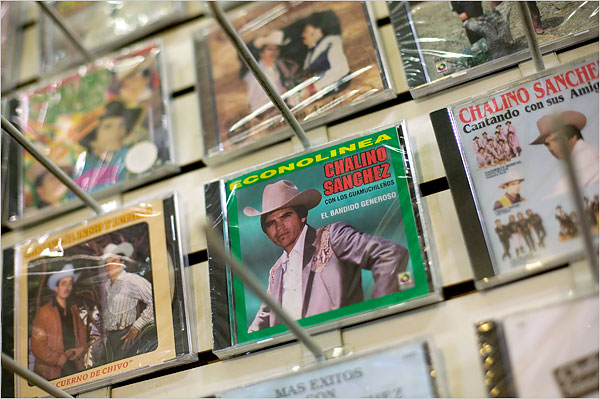
Photo: Eric Grigorian for The New York Times
This past weekend, the N.Y. Times‘ Travel section revisited Los Angeles, focusing on narcocorridos and venues that play an important part in its spread throughout Los Angeles. It went better this time than the last time they visited L.A.
Narcocorridos, and by extension, any form of Mexican music that is born and nourished in Los Angeles, are not covered much in the United States. Almost every time narcocorridos are mentioned in media, it’s tied with the current Mexican Drug war fiasco and spoken about negatively. I once sat in on a discussion with a well-known Mexican journalist at a university and she all but blamed the whole situation in Mexico & the Americas on narcocorridos. The whole time I sat there, I shook my head, unable to comprehend how someone could explicitly blame corridos for the “drug war” in México.
Coverage of narcocorridos in the U.S. is much different than in México. The United States is much less subjective than México in its coverage of narcocorridos. Mexican journalists have bought the Mexican government’s argument that narcocorridos are to blame for the drug trade and must be banned from radio play. American journalists have gone further into narcocorridos, documenting its rise and popularity among Mexicans in the United States and the constant airplay in radio. It’s a musical form that allows the children of Mexican immigrants to become immensely popular, though the singing is sometimes sub-par. Continue reading
